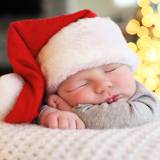Home > Hot Topics > Health & Wellbeing > Preschoolers > Dealing with headlice in toddlers & preschoolers
Shop
02407
https://www.under5s.co.nz/shop/Hot+Topics+Articles/Health+%26+Wellbeing/Toddlers/Dealing+with+headlice+in+toddlers+and+preschoolers.html
Dealing with headlice in toddlers & preschoolers
|
So where do you start when your toddler or preschooler gets headlice? Headlice or ‘nits’ as they’re often referred to, can be one of the most dreaded experiences of a parent. You don't know how your toddler or preschooler got them, and often you’re not sure of the best way to get rid of them.
|
You might also be interested in ...
Are your kids getting enough Vitamin D?
How do you know if your kids are getting enough vitamin D or if they're deficient in anyway? We look at the importance of vitamin D, common sources and how to ensure your kids get enough vitamin D on a daily basis.
8 Sleep tips for the Christmas holidays
Even babies and kids who are usually good sleepers may find it difficult to get enough sleep or settle during the busy Christmas period. So here are some useful sleep tips for the Christmas holidays to help ensure your baby and kids sleep is not disrupted during this hectic time of year.
join usJoin us on social media for all our latest news. |
sign upSign up and receive our latest newsletters. |
|







Headlice or ‘nits’ as they’re often referred to, can be one of the most dreaded experiences of a parent. You don't know how your toddler or preschooler got them, and often you’re not sure of the best way to get rid of them.
What we need to do as parents, is to find our own groove with the issue and overcome any hang ups we may have about passing blame, and get on with the most child-friendly headlice treatments and methods we can find.
Dealing with headlice in toddlers & preschoolers
1. No-one is to blame for headlice
The key thing to remember when dealing with headlice is that under no circumstances was it anyone’s fault that your toddler or preschooler got headlice.
No child goes out of their way to contract or spread headlice, and by not talking about it in an open way like you might other contagious health problems, doesn't help reduce the spread of headlice.
The fact is headlice love clean hair, and the reason why they have such a good success story is because their whole survival game is based around their intricate life cycle.
Headlice live on the scalp and make sure that by the time an adult has spread as many eggs as possible and died, the eggs will still remain viable and hatch just in time to catch you off guard and build up their army of headlice all over again!
They spread by crawling from one person’s hair to another’s. Usually by people in close proximity, like family members, friends or classmates at daycare or kindy.
2. Headlice treatments
Headlice have been around for millions of years, and are not leaving anytime soon.
The ancient Egyptians had nit combs for removing the eggs which were the core design of the combs we use today. Not too much has changed in the evolution of removing headlice since this time.
These days you’ll find a wide range of headlice treatment products on the market. However, it’s not always easy to choose the best one to use on your toddler or preschooler.
Some people like to treat their kids hair with natural-based headlice treatments, whilst others prefer to use chemical-based products, many of which come with unlisted ingredients and unlisted side effects.
You’ll also likely to receive plenty of unsolicited advice from friends and family that they swear by and have used in the past on their own kids.
3. Talking to your toddler or preschooler about headlice
So how can we deal with these critters in the most child-friendly of ways that your toddler or preschooler will understand?
Firstly, begin by reassuring them that it was not their fault and they are not to blame themselves or others for having headlice.
Secondly let them know they are still lovable, not disgusting and this problem will get solved with the two of you together as a team.
4. Getting rid of headlice
When it comes to getting rid of headlice, try to sit down with your toddler or preschooler when they’re calm and don’t mind you playing with their hair. If they are feeling wriggly and bouncy, they won't sit still long enough for you to tackle the problem.
Try creating a plan, letting them know what you’re about to do and how much time it will take. Or perhaps offer them an incentive or reward for sitting still.
i To start your attack on the headlice, you will need a small bowl of water, a paper towel, your headlice comb and a headlice oil-based treatment.
If you can’t get your hands on any oil based headlice product, use any good quality vegetable oil which will help detangle the hair, suffocate the headlice breathing holes and allow you to see the eggs and adult lice.
ii Comb through and remove any live headlice by placing them easily on the paper towel or in the bowl of water, and remove any eggs in the same fashion.
When you are done, your toddler or preschooler can see what the headlice look like and count how many you have caught!
iii You will need to continue checking daily for a while to get on top of the problem, and treat again in 7 days’ time, as any eggs that you have missed, will have hatched out by then.
Just like any other health issue your toddler or preschooler may have, take having headlice as a life lesson and trust you will know more and be better prepared next time, and more likely than not, there will be a next time!
More kids health articles to enjoy:
Source: This article was kindly written for us by Ramona Cording from Goodbye NITS - a natural headlice product which offers free parent advice and a nationwide school headlice program called Awesome Hair Awareness, helping the conversation around headlice.